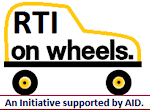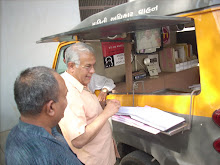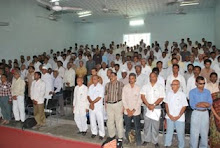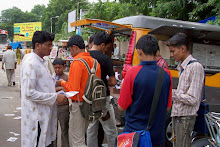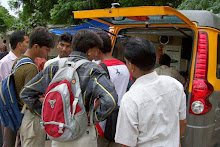The
Hindu: National: Saturday, September 29, 2018.
The
benefits being projected in Aadhaar’s name are not backed by the data
The
first death anniversary of Santoshi Kumar, a Dalit girl from Simdega,
Jharkhand, was this week. She died of hunger, at the age of 11, a few weeks
after her family’s ration card was cancelled by the State government because
they failed to link it to Aadhaar.
The
Aadhaar judgment of September 26 provided an opportunity for the Supreme Court
to make amends for her tragic death. The upholding (by and large) of Section 7
by the majority judges is, therefore, the biggest let-down in the Aadhaar
judgment. This is because the judges decided to accept the government’s ‘assertions’
wrongly as ‘facts’.
Assertions
versus facts
In
the majority opinion, they state: “The entire aim behind launching this
programme is the ‘inclusion’ of the deserving persons who need to get such
benefits. When it is serving much larger purpose by reaching hundreds of
millions of deserving persons, it cannot be crucified on the unproven plea of
exclusion of some. We again repeat that the Court is not trivialising the
problem of exclusion if it is there.” (p. 389.) There are many instances of
assertions being accepted as facts. This piece seeks to show why they were
wrong in believing the assertion about inclusion, identification and exclusion,
to illustrate the bigger problem with the majority view.
For
instance, the Unique Identification Authority of India (UIDAI) submitted to the
court that the ‘failed percentage’ of iris and finger authentication are 8.54%
and 6%, respectively. Later, on Page 384, discussing the issue of exclusion,
the judgment notes that the UIDAI is said to have claimed 99.76% “biometric
accuracy”, suggesting that two different failure rates have been submitted to
the court.
Though
the UIDAI claims to have taken care of these failures by issuing a circular on
October 24, 2017 (after Santoshi’s death), to put in place an exemption
mechanism, until then there was no exemption. Even after the circular has been
issued, there is little evidence of it being implemented. Since 2017, there
have been at least 25 hunger deaths that can be traced to Aadhaar-related
disruption in rations and pensions, of which around 20 deaths occurred after
the aforementioned circular was issued.
The
idea that Aadhaar enables inclusion has taken firm root in people’s minds, as
well as the judges’. This belief, however, is misconceived. If it means that
Aadhaar is an easy ID to get, that is perhaps true. Only ‘perhaps’ because
there are many people who have paid to get Aadhaar even though it is meant to
be free; many have had to try several times before they succeeded in getting
it. Those with any disability have found it very hard to enrol or have failed
to enrol.
The
number of people excluded from getting Aadhaar may be small (as a percentage of
the population), but they happen to be the most vulnerable bed-ridden old
persons, victims of accidents, people with visual disabilities, etc.
Further,
it is a misconception that for millions of Indians, it is the only (or first)
ID they have. According to a response to an RTI, 99.97% of those who got
Aadhaar numbers did so on the basis of existing IDs.
More
importantly, no one in government has been able to explain how Aadhaar enables
inclusion into government welfare programmes. Each government programme has its
own eligibility criterion. In the Public Distribution System (PDS), there are
State-specific inclusion/exclusion criteria. In some States, if you have a
government job or live in a concrete/pucca home, you cannot get a PDS ration
card even if you have an Aadhaar card.
Conversely,
if you lived in a mud hut or were an Adivasi, you would get a PDS ration card.
After the coming of Aadhaar, on top of satisfying the State eligibility
criteria, you need to procure and link your Aadhaar number in order to continue
to remain eligible for your PDS ration card.
Before
Aadhaar was made mandatory, it was neither necessary (you could get subsidised
PDS grain without Aadhaar), nor sufficient (possessing Aadhaar alone did not
entitle you to PDS grain). With Aadhaar being made compulsory, it has become
necessary, but it is not sufficient to get welfare. It is a pity that the
majority judges were unable to grasp this point.
The
biggest source of exclusion from government programmes (before and after
Aadhaar) remains the fact that India’s spending on welfare remains abysmally
low. Before the National Food Security Act (NFSA), 2013 was implemented, roughly
50% of the Indian population was covered by the PDS. The NFSA expanded coverage
to about two-thirds. This expansion of the PDS is what has led to inclusion
though exclusion errors persist in some areas (for example, regions such as
western Odisha where universal coverage is necessary).
It’s
about budgets
The
question that arises is, did the government misdiagnose the source of exclusion
by blaming it on a lack of IDs rather than inadequate budgets and faulty
selection of eligible households? Or, did the government purposely mislead the
public on this issue because fixing the real problem would have entailed an
increase in government spending?
Either
way, a very successful programme of propaganda was set in motion to convince
people into believing that Aadhaar was a project of inclusion and the ultimate
tool against corruption in welfare programmes.
The
claims about what and how much Aadhaar could do for reducing corruption in
welfare were similarly blown out of proportion. For instance, quantity fraud (where
a beneficiary is sold less than her entitlement, but signs off on the full
amount) continues with Aadhaar-based biometric authentication. A rogue dealer
who I cannot easily hold to account can as easily force me to biometrically
authenticate a purchase of 35 kg, but give me only 32 kg, as he could force me
to sign in a register.
Meanwhile,
the propaganda machinery again convinced people by repeating that the welfare
rolls in India were full of fakes, ghosts, duplicates, etc. There was no
reliable evidence on the scale of this problem (“identity fraud”). Recent
independent surveys and government data are beginning to suggest that it wasn’t
the main form of corruption. Linking Aadhaar cards with the PDS in Odisha led
to the discovery of 0.3% duplicates.
Pointer
to a divide
Yet,
the majority opinion states that “the objective of the Act is to plug leakages”
and that “we have already held that it fulfills legitimate aim” (page 386). For
those who work on these programmes, it is very puzzling why these straightforward
misrepresentations have not been challenged by the media.
This
phenomenon appears to be an outcome of the deep social and economic divide in
Indian society. Those who benefit from these programmes and who understand why
Aadhaar cannot improve inclusion do not have a voice in the media or
policy-making. This allows anecdotes (repeated ad nauseam) to become the basis
for taking big decisions. Contrary to the rhetoric of evidence-based
policy-making, what we have seen in this case is anecdote-based policy-making.
The opinion of the majority judges also betrays this deep divide caste and
class in society.
Yet,
Wednesday’s Aadhaar verdict with four judges latching on to the government’s
version of the story, and one of them applying his mind to the matter
independently, reaffirms that you can’t mislead all the people all the time.
(Reetika
Khera is an Associate Professor at the Indian Institute of Management,
Ahmedabad)




